What’s in Your Hangar?
By Mike Davenport, EAA 89102, Langley, British Columbia
September 2019 - I see this month's article perhaps as the first of a series on the subject. Do you have something interesting in your hangar that you'd care to share? If so, why not write it up so everyone can enjoy it as much as you do?
As we poke around our airport, all we usually see are closed doors. And because I have a greater than normal curiosity (some might say I'm nosy), I often wonder what is behind those doors. What exotic aircraft or other curiosity is hiding behind that padlock?
Hangars, according to our fire marshal, are supposed to be for aircraft storage, and while this is usually the case, there are some notable exceptions. With more and more people living in townhouses or condos who might need a place to store their toys, where better than in the hangar alongside their Cherokee or 172? Some things I've seen include antique cars and campers, and even boats are not uncommon. And what better place to store the prized Harley for the winter than behind your Mooney?
Anyway, enough of the preamble. In the interest of full disclosure, here is what is in our hangar.
It is a condo unit with eight bays and multiple owners. While secured on the exterior with a typical hardware store padlock, it is fully open on the inside, so a certain trust amongst the owners is a given.
The contents are an eclectic grouping dominated naturally by airplanes. After all, it is a hangar. But amongst the various planes, toolboxes, and workbenches found there, you will also find a 1978 Plymouth Barracuda, a 1949 Ford coupe, and a travel trailer. Oh yes, and a log splitter. And no, I'm not sure why either.

Some not-exactly aircraft.
And did I mention the Harvard? Well a sort of a Harvard, but just for very little people. This one is made of plywood and was built from plans bought from EAA. It is showing signs of its age and hard use, just like the rest of us. The yellow paint is chipped, and the wingtips have some "owies." But it is still the perfect taxi trainer for those little people.
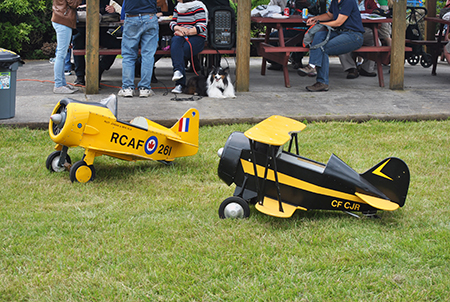
Little Harvard and friend.
This Stinson, a 1946 model that I bought 27 years ago, I still fly as often as weather and resources permit. During that time, it has had a paint job and an engine change and suits my purposes well. It will carry almost anything that you can get through the doors. The 165-hp Franklin burns way too much gas, especially at today's prices, but then most things cost too much.
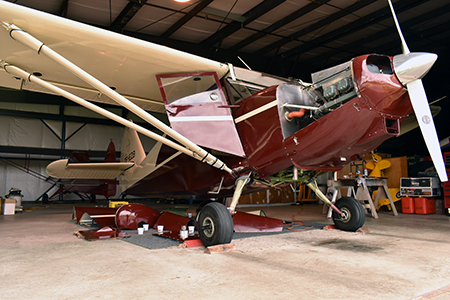
The author's Stinson.
Next door is a homebuilt Piper belonging to Barry and his wife that sees regular use as a family runabout. It's now also a time-builder for number one son, who is working towards a commercial ticket.
Next to Barry's bay is our newest member with a brand new, under-construction Zenith CH 750. Greg and Diana just bought their bay this year and have moved in and set up shop.
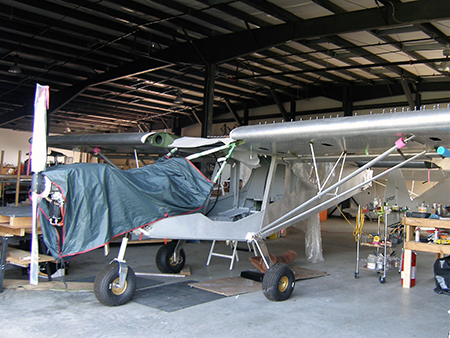
Latest addition, a Zenith CH 750 under construction.
The last bay on the west side holds a former air show star, the Pitts S-2B of Ray-Ban Gold Aerobatic Team member George Kirbyson. This is George's second Pitts, replacing one that was destroyed in a fiery crash after an engine failure just off the runway here at Langley. The Pitts is resplendent in its original Ray-Ban black and gold paint scheme.
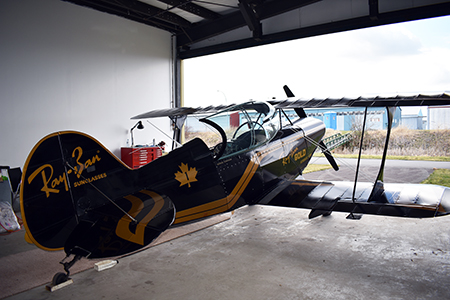
George Kirbyson's Pitts C-GYRW.
On the east side, we have another homebuilt Piper. The very capable four-place Family Cruiser model belonging to the Holliday family. Built by Dan and Werner, this aircraft has since been seen at fly-ins and air shows in the Pacific Northwest.
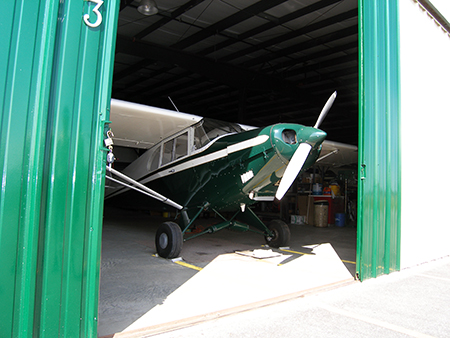
Piper Family Cruiser.
Next to the Hollidays' Piper is the oldest of the fleet, this time a 1938 Fairchild 24K that Werner restored and flies regularly. See the article on this beauty in the RAA Flyer or, even better, in a copy of my book, People Places and Planes.
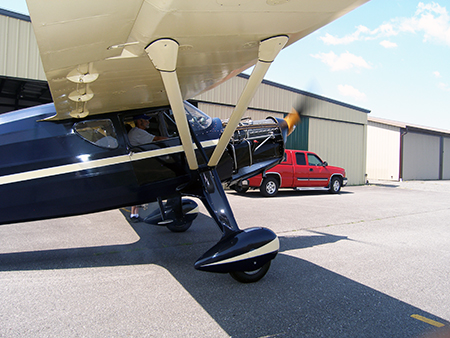
1938 Fairchild 24K.
And the last tenant to be seen is the 1941 Porterfield, also restored and owned by Werner. See the RAA Flyer for specifics on this little red and silver antique.
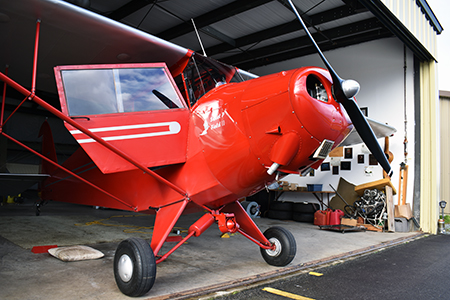
Werner's 1941 Porterfield.
This hangar has become a mini aviation museum and one where the owners share rides, tools, ideas, and skills as needed. It's a tiny community of friends in the midst of a busy working airport.
So, once again, what's in your hangar? Let us know!
